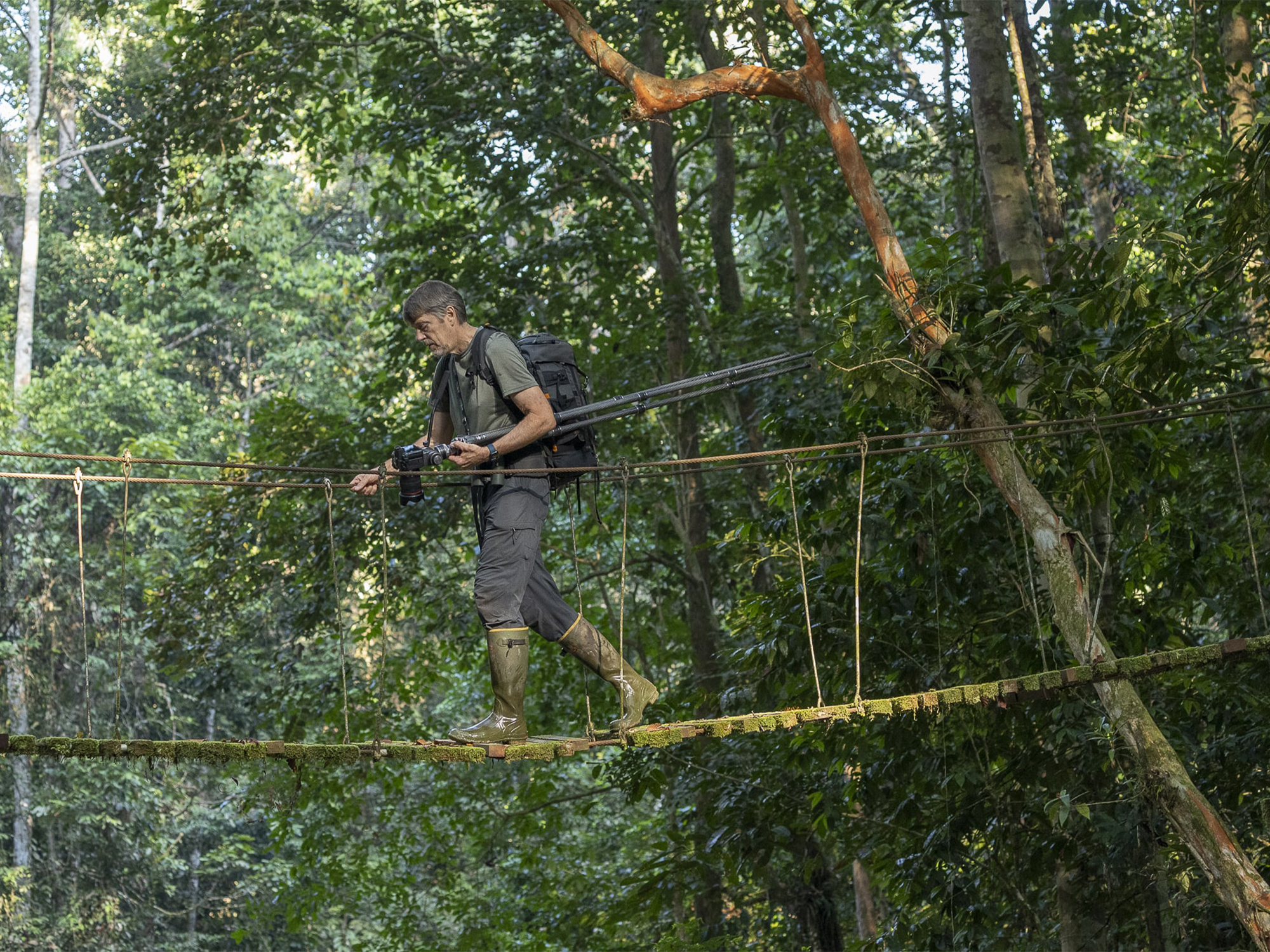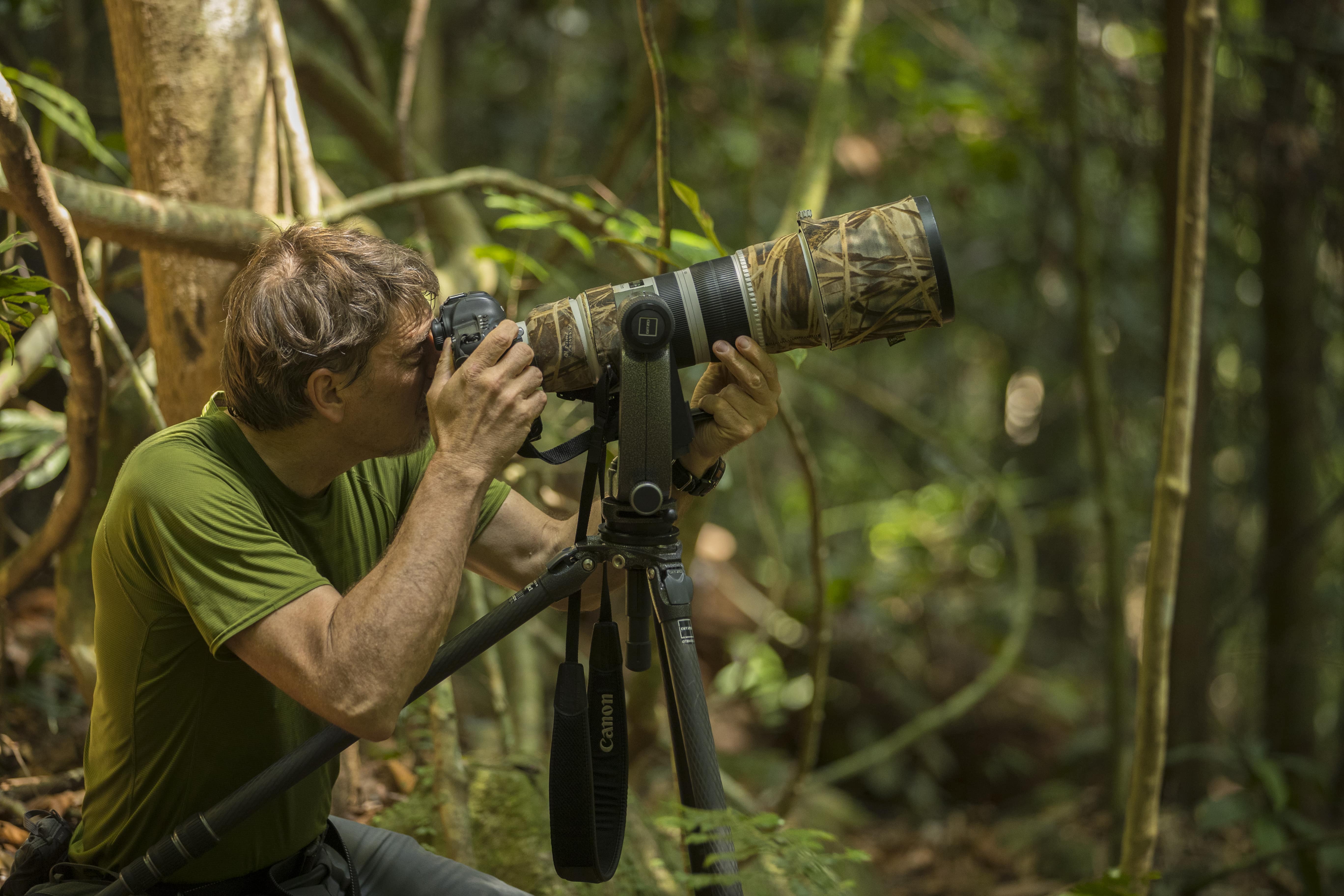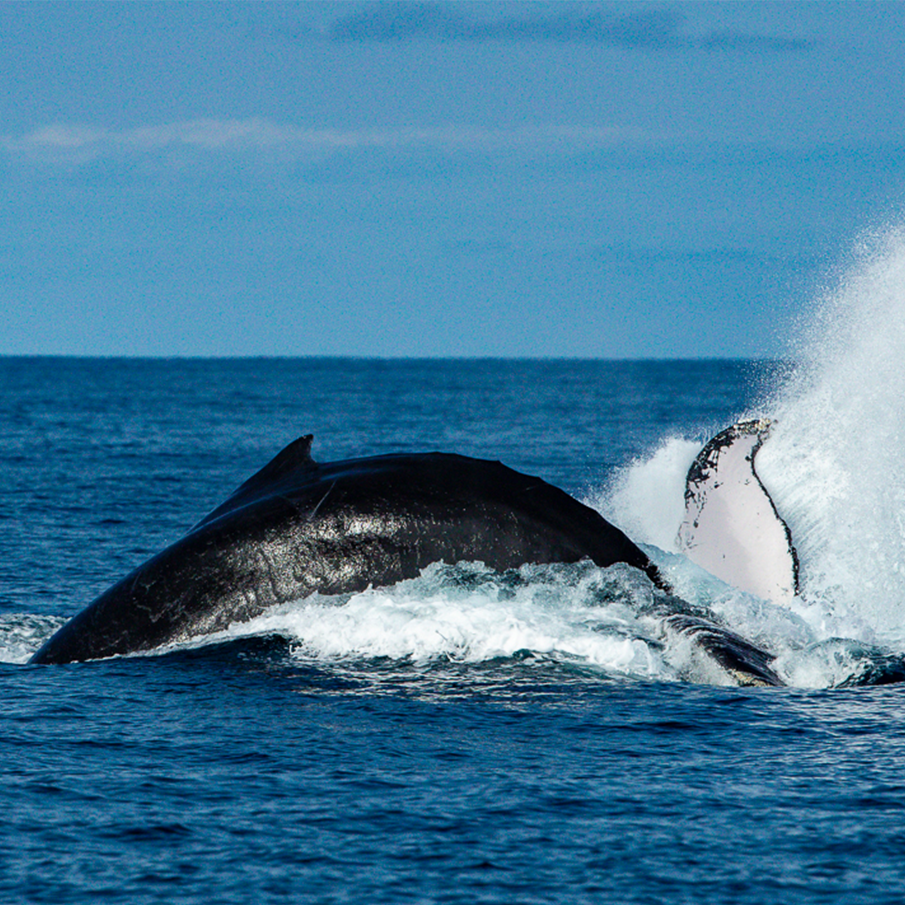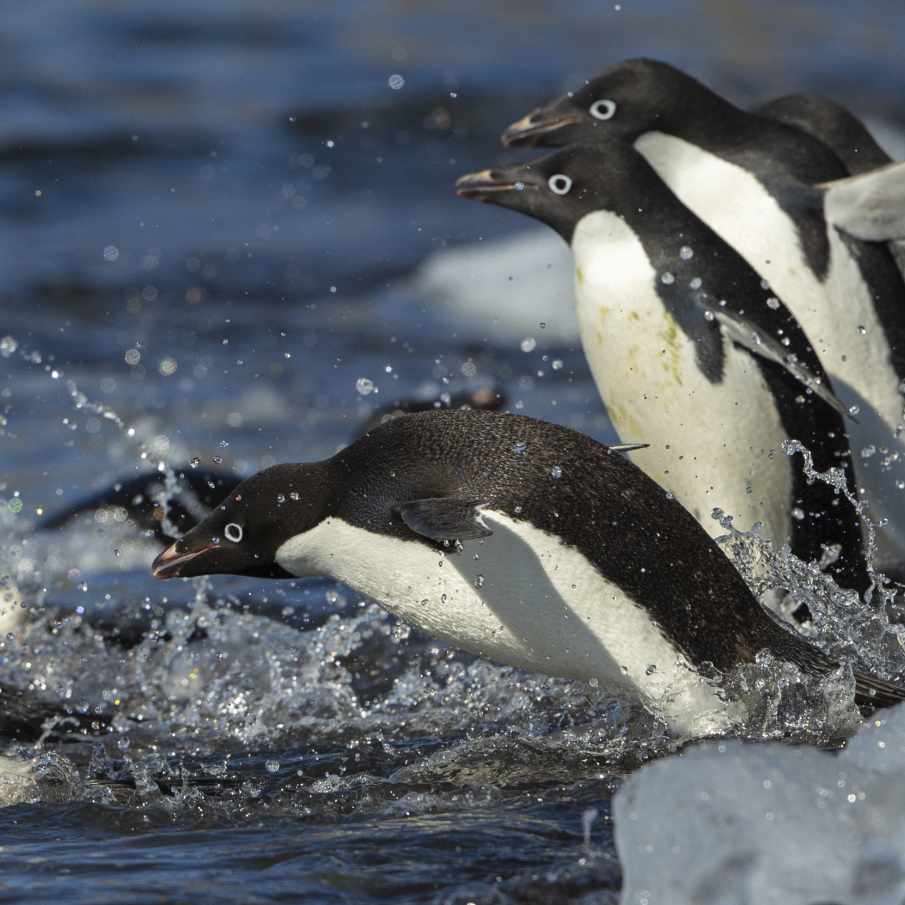Tim
Laman
Tim Laman is a field biologist and wildlife photojournalist. Tim first went to Borneo in 1987 and his pioneering research in the rain forest canopy led to a PhD from Harvard and his first National Geographic article in 1997. He has pursued his passion for exploring wild places by becoming a regular contributor to National Geographic magazine where he has published 23 feature stories.
Location: Gunung Palung National park, Borneo
Date: 12th September 2022


Heroes of the extreme
An interview with Tim Laman.


Tim Laman in Gunung Palung National Park, Borneo.
Meeting Tim
The journey to the extraordinary.
When did you start photographing, and how did you become a professional? And why a conservation photographer?
I became interested in photography as a teenager, and became more and more serious about it as I went through school studying biology and working on different field research projects.
I taught myself photography while I continued my education doing my PhD research in the rainforest of Borneo.
I became passionate about rainforest conservation and decided that I could have more impact as a wildlife photographer than as a scientist in terms of spreading awareness about the importance of protecting the planet’s biodiversity.
You have travelled all around the world. Is there any place you like to photograph better than everywhere else?
One place that I keep coming back to over and over is a rainforest in the Indonesian part of Borneo called Gunung Palung National Park. In fact, I am here again right now as I write this in August 2022. It is not an easy place to photograph wildlife because of the density of the primary forest, but it is one of the best remaining examples of Borneo’s incredibly rich lowland rainforests.
The variety of life is phenomenal.


Tim Laman using the Gitzo Systematic Tripod with a Fluid Gimbal Head.
Tim's gear
Ensure those moments are never compromised.
What is so special about the Gitzo equipment that made you choose it among all the others?
I started using Gitzo tripods over twenty years ago because I wanted the best quality, lightweight, and portable tripod that I could get. I use my tripods in very challenging conditions where it is almost always humid and wet, and I have not been disappointed with my Gitzo equipment.


Fin whales in Antarctica.


Penguins in Antarctica.
"I think that the highest achievement that I could hope for would be that my images would make an impact on conservation in a real tangible way."
In terms of equipment, what is the gear you usually go on your expeditions with?
My standard tripod kit for wildlife photography is:
Systematic Legs: GT3543XLS
Mountaineer Legs: GT1542
Monopod: GM4552L
75 mm bowl for Series 3: G1422
Leveling base 75 mm: GSLVLS
Gimbal Head: GHFG1
Ball Head large: GH3382QD
Ball Head small: GH1382QD
Two-way head: GHF2W
To explain a little about why I chose this equipment, first, the extra tall Systematic Series 3 legs are plenty strong for the largest lenses for still photography, and the extra length is great when working on hills, or from boats with the tripod in the water, etc. The Mountaineer tripod is a lighter option for hikes where I will mainly do landscape or close-up shooting. I like to set up my Systematic Series 3 with the bowl adaptor and leveling base because that way I can quickly level my gimbal head, even if the tripod is not perfectly level. The ball heads are useful on either tripod for all general landscape or macro work. And the two-way head is great when I want to be able to also do some light video shooting. It is also the perfect head to use with a spotting scope for birdwatching. I also take a monopod to use when I am going after some fast moving subjects with a big lens, and it basically gives me support for holding the lens for long periods much better than hand-held shooting. I like to use the gimbal head on the monopod with long lenses because it makes it very easy to balance them.
For major natural history filming assignments where I am shooting with a RED Digital Cinema camera and big lenses, I use a Sachtler Video head with a Gitzo Systematic Series 5 tripod (Systematic Legs: GT5543XLS) with a 100 mm bowl adaptor. I like the Gitzo tripod legs for the video work as well, because they are light and stiff, and easy to adjust from full height or to spread the legs to get down to ground level.
How do the extreme conditions affect the choice of your gear, and your way to operate in the field?
To be honest, I don’t worry about extreme conditions too much. My Gitzo tripods have worked great for me whether I am in Antarctica in freezing conditions, or getting soaking wet in the rainforest of Borneo every day. My tripods definitely take a beating, but as long as I let them dry out after a soaking, and take apart the joints to clean them once in a while, they just keep working.
Framing the extraordinary
Capturing award winning photographs.
One of your images has been chosen recently by NG to advertise the re-opening of their museum. It’s one of your favorite photographs, and it’s a stunning work, and destined to become iconic, can you talk about it, and let us know how long you have been waiting for the magic moment?
Thank you. My image called “Bird-of-Paradise Sunrise” is definitely one of my favorites. It captures a Greater Bird-of-Paradise displaying in the canopy at sunrise, and one of the reasons I like it so much is that it shows the bird in its habitat, thus conveying the importance of the forest for all the wildlife that lives there. Without the forest, there would be no birds-of-paradise or other animals dependent on the forest.
This image required a lot of planning because it was made with a remote-controlled camera mounted to the tree where the bird was displaying, and was controlled from a blind that was positioned in another nearby tree. It required a week of climbing both trees multiple times, usually in the dark before sunrise, to set up the camera and get everything working. Then, of course, to keep trying until everything came together, and I had a morning with a beautiful sunrise lighting up the mist, just when the bird was displaying. Making that image was definitely one of the highlights of my photographic career so far.


Tim Laman using the Gitzo Systematic Tripod with a Fluid Gimbal Head.
Be inspired
Read more about Tim's breathtaking journey in Borneo.
SAVING RAINFORESTS
AND ENDANGERED SPECIES
A Gitzo Story by Tim Laman
READ THE STORY
ORANGUTAN
A Gitzo Story by Tim Laman
READ THE STORY

























